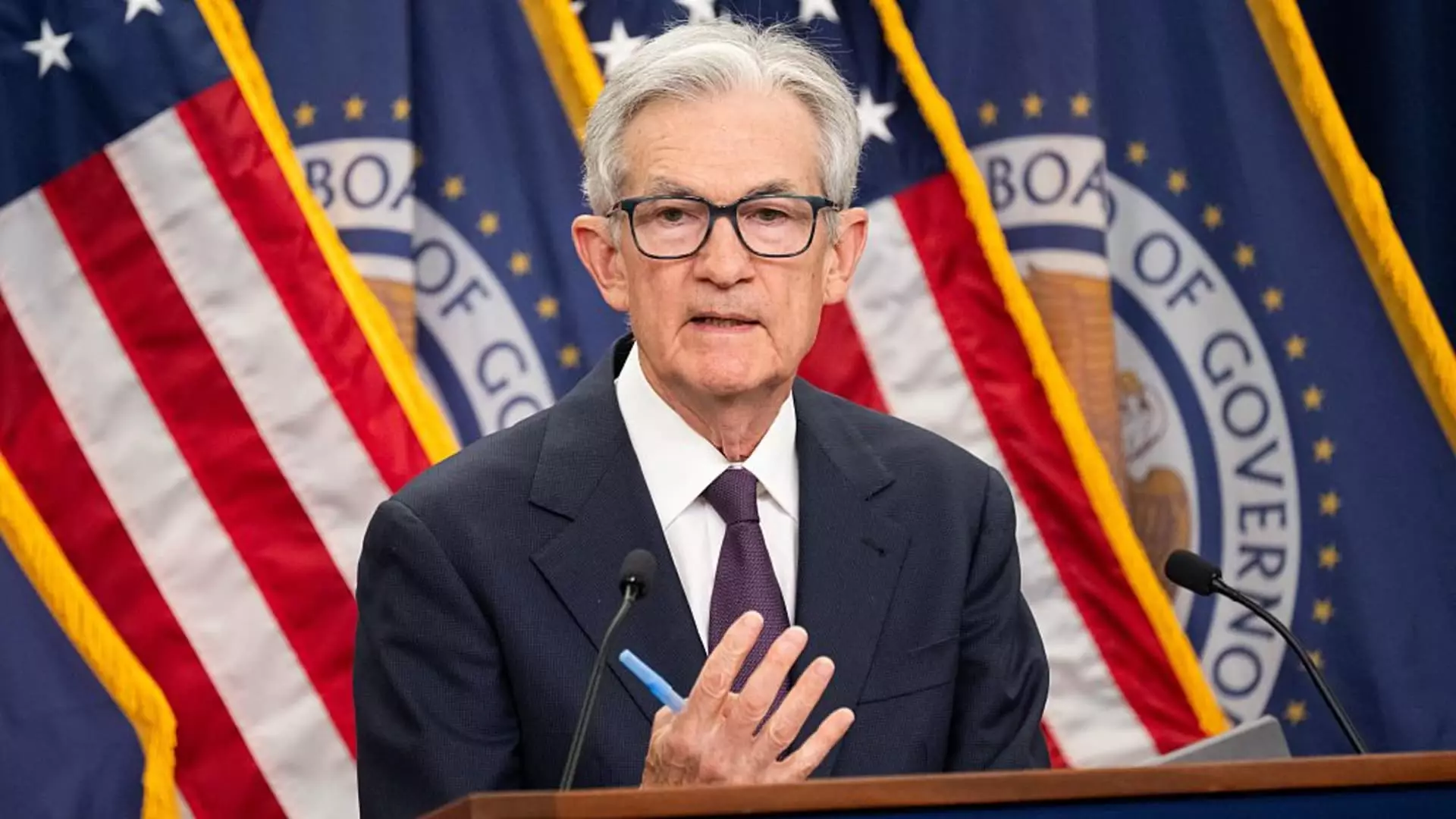In a world teetering on the edge of economic uncertainty, Federal Reserve Chair Jerome Powell’s recent remarks underscore an unwavering commitment to controlling inflation. However, the path forward, as articulated by Powell, remains fraught with hesitancy. With inflation persistently outpacing the Federal Reserve’s 2% target, the intricate web of economic indicators, tariffs, and labor markets presents a daunting puzzle that Powell and his colleagues grapple with. His diplomatic caution, particularly regarding the effects of President Trump’s tariffs, raises eyebrows; it speaks volumes about the delicate balancing act between economic policy and political pressures.
Powell’s inflation outlook indicates a slight uptick, projecting core inflation might rise to 2.6% in the near future. It seems counterintuitive — as the labor market reportedly flourishes with full employment — yet the specter of tariffs looms large, clouding the economic horizon. Tariff impacts historically have shown a pattern of sporadic price hikes rather than consistent inflation pressure, but Powell’s insistence on waiting for more data signals an uncertainty that could be seen as a lack of proactive leadership.
Political Turbulence: A Fed Chair Under Fire
The stakes have been raised further as political tensions continue to mar Powell’s tenure. Trump, staunchly critical of Powell’s monetary policy decisions, has taken to social media platforms to launch scathing critiques, framing the Fed Chair as obstinate and misled. Such public adversarial exchanges illustrate a broader disconnect between the Federal Reserve’s technical decision-making and the political game that governs economic discourse. Powell’s clinical economic assessments, predictably laden with jargon, stand in stark contrast to Trump’s bullish rhetoric, leaving many to wonder how deeply these tensions might disrupt the Fed’s operational integrity.
Despite Powell’s reputation as a prudent steward of monetary policy, the noise from the administration threatens to undermine the Federal Reserve’s perceived independence. Our economic system requires that such significant monetary policy decisions remain grounded in data rather than swayed by political whims. Unfortunately, Trump’s public discontent may influence investor confidence, creating ripple effects that only complicate the real economic landscape.
The Fragility of Economic Indicators
While Powell asserts that economic growth is robust, underlying fragilities remain. The Fed’s ability to sustain an environment of low inflation while promoting full employment is a tall order, and recent data releases have only added to the complexity. The consumer price index’s modest rise of just 0.1% in May may appear benign; however, it belies the fundamental question of sustainability. Can this stability withstand the unpredictable nature of tariffs? This question looms large, requiring vigilant monitoring of not just numbers but the sentiment that drives consumer behavior.
Powell’s description of the economy as “solid” could evoke skepticism among those acutely aware of the ripple effects tariffs may induce. As policymakers bide their time for clearer signals, the narrative of economic normalcy is overshadowed by uncertainty, leading to a paradoxical environment where positivity and caution coexist uneasily.
The Indecision of the FOMC
Diving deeper into the machinations of the Federal Open Market Committee (FOMC), an intriguing picture emerges. The committee’s seemingly unanimous decision to hold rates steady conceals underlying fractures among its members’ future projections. The so-called “dot plot,” rife with divergent views on potential rate cuts, betrays a lack of consensus that is paramount in guiding future economic direction.
The fragmentation within the FOMC’s expectations raises questions about the collective resolve of its members. With key figures like Michelle Bowman and Christopher Waller advocating for potential cuts, the dissonance renders the committee susceptible to external pressures. Investors and stakeholders are undoubtedly affected by this indecision, leading to an environment that oscillates between cautious optimism and unsettling unpredictability.
Seeking a Stable Path Forward
The central tenet of Powell’s strategy seems to hinge on one core belief: without price stability, sustained labor market strength is unattainable. Yet, as he navigates these treacherous waters, one can’t help but wonder if the wait-and-see approach serves the broader economy well or simply stalls necessary action. The Federal Reserve’s mandate is to shield the economy from avoidable shocks, yet tarry too long, and any number of variables—political, economic, or social—could veer it wildly off course. The question arises: as the Fed remains entrenched in its cautious posture, who ultimately bears the brunt of policy hesitation? The answer may just determine the future of economic wellbeing for countless Americans.


Leave a Reply